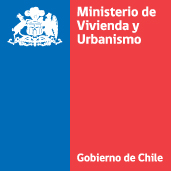TOD Standard / Institute for Transportation and Development Policy
Tipo de material: TextoIdioma: Inglés Detalles de publicación: New York: ITDP, 2017Descripción: 100 p.: il. colClasificación CDD:
TextoIdioma: Inglés Detalles de publicación: New York: ITDP, 2017Descripción: 100 p.: il. colClasificación CDD: - 711.7(083.744) T633i 2017
| Tipo de ítem | Biblioteca actual | Colección | Signatura topográfica | Copia número | Estado | Fecha de vencimiento | Código de barras | |
|---|---|---|---|---|---|---|---|---|
 Monografía
Monografía
|
Centro de Documentación Estantería | Colección General | 711.7(083.744) T633i 2017 (Navegar estantería(Abre debajo)) | c.1 | Disponible | 0000123534697 |
What is TOD Standard? -- Who should use the TOD Standard in brief? -- V.3.0 Updates -- Scoring new development projects stations catchment areas -- TOD Standar 2017 Rankings -- Governance -- Principles, performance objectives and metrics (Structure and Rationales for the TOD Standard) -- Scoring in detail -- Walk -- Cycle -- Connect -- Transit -- Mix -- Desify -- Compact -- Shift -- Guide to scoring the TOD Standard metrics -- Using the TOD Standard -- Scoring development projects -- Station carchment area evaluation -- Glossary -- Scorecard.
The TOD Standard stands for the rights of all to access the city: to walk and cycle safely, to easily and affordably reach the most distant destination through rapid and frequent transit, and to live a good life free of dependence on cars. It stands for access to opportunity, education, services, and all the resources available via no- or low-cost mobility options.
At the Ford Foundation, many decades of work on urban proverty reduction and a focus on social justice have taught us tha the combined cost of housing and transport is by far the heaviest burden on poor urban housesolds' finances and time budget. These costs are too often the main barrier to a true share in human development and well-being in prosperous cities for low-income and marginalized communities. We know we will not make meaningful progress on urban poverty without tackling the spatial inequities built in to our land use, housing, and transport systems that are exacerbating inequality and deepening poverty for the most vulnerable.
The Ford Foundation has been a supporter of ITDP's efforts to develop frameworks and metrics to measure access and inclusion in cities. The TOD Standard is the result, and this new version will helps citizens in all capacities find the right tools for creating inclusive transit-oriented communities. Now we all collectively need to work to get there.

